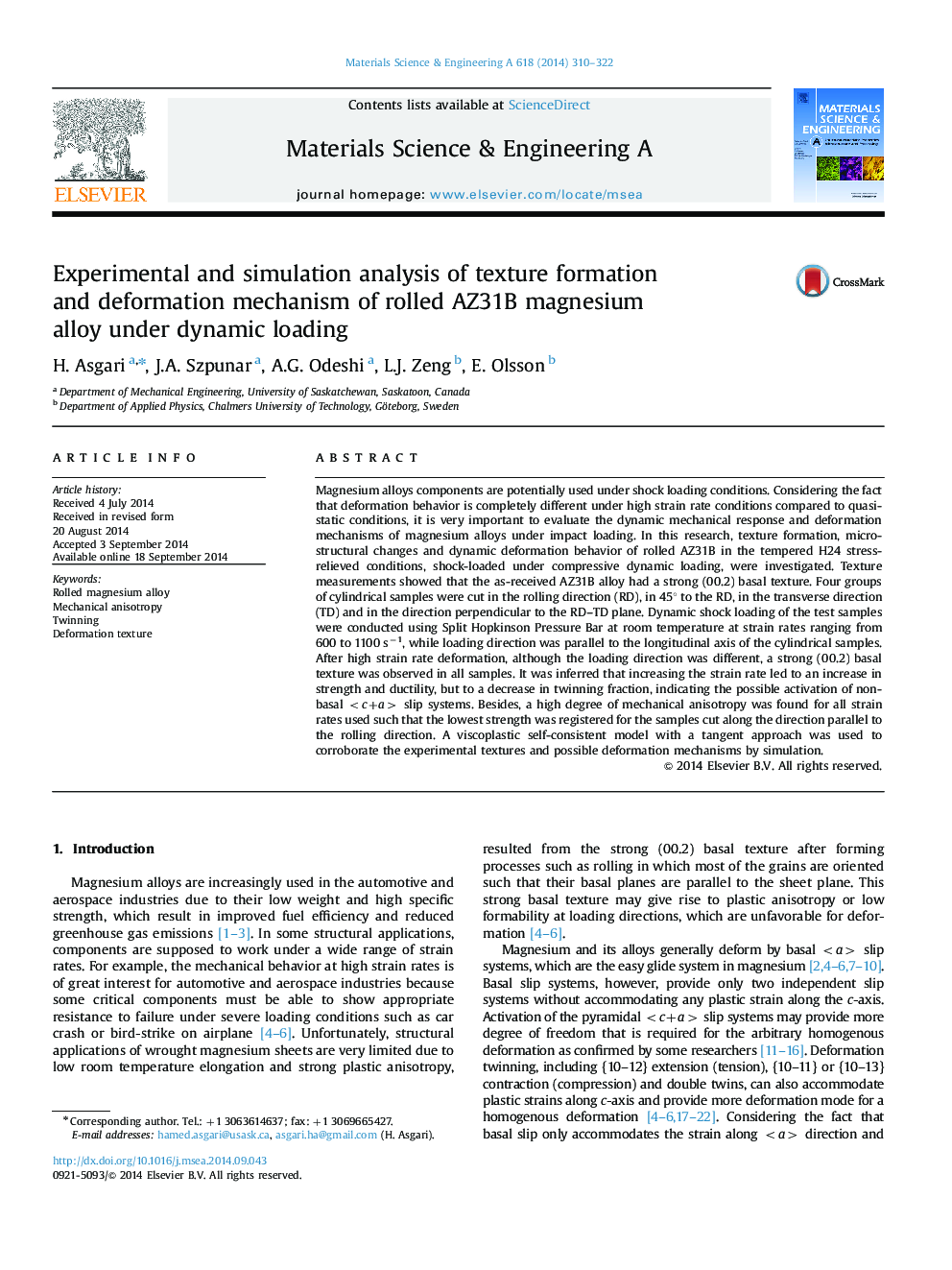| کد مقاله | کد نشریه | سال انتشار | مقاله انگلیسی | نسخه تمام متن |
|---|---|---|---|---|
| 1574742 | 1514725 | 2014 | 13 صفحه PDF | دانلود رایگان |
عنوان انگلیسی مقاله ISI
Experimental and simulation analysis of texture formation and deformation mechanism of rolled AZ31B magnesium alloy under dynamic loading
دانلود مقاله + سفارش ترجمه
دانلود مقاله ISI انگلیسی
رایگان برای ایرانیان
کلمات کلیدی
موضوعات مرتبط
مهندسی و علوم پایه
مهندسی مواد
دانش مواد (عمومی)
پیش نمایش صفحه اول مقاله

چکیده انگلیسی
Magnesium alloys components are potentially used under shock loading conditions. Considering the fact that deformation behavior is completely different under high strain rate conditions compared to quasi-static conditions, it is very important to evaluate the dynamic mechanical response and deformation mechanisms of magnesium alloys under impact loading. In this research, texture formation, microstructural changes and dynamic deformation behavior of rolled AZ31B in the tempered H24 stress-relieved conditions, shock-loaded under compressive dynamic loading, were investigated. Texture measurements showed that the as-received AZ31B alloy had a strong (00.2) basal texture. Four groups of cylindrical samples were cut in the rolling direction (RD), in 45° to the RD, in the transverse direction (TD) and in the direction perpendicular to the RD-TD plane. Dynamic shock loading of the test samples were conducted using Split Hopkinson Pressure Bar at room temperature at strain rates ranging from 600 to 1100 sâ1, while loading direction was parallel to the longitudinal axis of the cylindrical samples. After high strain rate deformation, although the loading direction was different, a strong (00.2) basal texture was observed in all samples. It was inferred that increasing the strain rate led to an increase in strength and ductility, but to a decrease in twinning fraction, indicating the possible activation of non-basal slip systems. Besides, a high degree of mechanical anisotropy was found for all strain rates used such that the lowest strength was registered for the samples cut along the direction parallel to the rolling direction. A viscoplastic self-consistent model with a tangent approach was used to corroborate the experimental textures and possible deformation mechanisms by simulation.
ناشر
Database: Elsevier - ScienceDirect (ساینس دایرکت)
Journal: Materials Science and Engineering: A - Volume 618, 17 November 2014, Pages 310-322
Journal: Materials Science and Engineering: A - Volume 618, 17 November 2014, Pages 310-322
نویسندگان
H. Asgari, J.A. Szpunar, A.G. Odeshi, L.J. Zeng, E. Olsson,